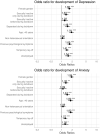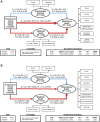Benefits of Sexual Activity on Psychological, Relational, and Sexual Health During the COVID-19 Breakout
- PMID: 33234430
- PMCID: PMC7584428
- DOI: 10.1016/j.jsxm.2020.10.008
Benefits of Sexual Activity on Psychological, Relational, and Sexual Health During the COVID-19 Breakout
Abstract
Background: The COVID-19-related lockdown has profoundly changed human behaviors and habits, impairing general and psychological well-being. Along with psychosocial consequences, it is possible that sexual behavior was also affected.
Aims: With the present study, we evaluated the impact of the community-wide containment and consequent social distancing on the intrapsychic, relational, and sexual health through standardized psychometric tools.
Methods: A case-control study was performed through a web-based survey and comparing subjects of both genders with (group A, N = 2,608) and without (group B, N = 4,213) sexual activity during lockdown. The Welch and chi-square tests were used to assess differences between groups. Univariate analysis of covariance, logistic regression models, and structural equation modeling were performed to measure influence and mediation effects of sexual activity on psychological, relational, and sexual outcomes.
Outcomes: Main outcome measures were General Anxiety Disorder-7 for anxiety, Patient Health Questionnaire-9 for depression, Dyadic Adjustment Scale for quality of relationship and a set of well-validated sexological inventories (International Index of Erectile Function, Female Sexual Function Index, and male-female versions of the Orgasmometer).
Results: Anxiety and depression scores were significantly lower in subjects sexually active during lockdown. Analysis of covariance identified gender, sexual activity, and living without partner during lockdown as significantly affecting anxiety and depression scores (P < .0001). Logistic regression models showed that lack of sexual activity during lockdown was associated with a significantly higher risk of developing anxiety and depression (OR: 1.32 [95% CI: 1.12 - 1.57, P < .001] and 1.34 [95% CI: 1.15 - 1.57, P < .0001], respectively). Structural equation modeling evidenced the protective role of sexual activity toward psychological distress (βmales = -0.18 and βfemales = -0.14), relational health (βmales = 0.26 and βfemales = 0.29) and sexual health, both directly (βmales = 0.43 and βfemales = 0.31), and indirectly (βmales = 0.13 and βfemales = 0.13).
Clinical translation: The demonstrated mutual influence of sexual health on psychological and relational health could direct the clinical community toward a reinterpretation of the relationship among these factors.
Strengths and limitations: Based on a large number of subjects and well-validated psychometric tools, this study elucidated the protective role of sexual activity for psychological distress, as well for relational and sexual health. Main limitations were the web-based characteristics of the protocol and the retrospective nature of prelockdown data on psychorelational and sexual health of subjects recruited.
Conclusions: COVID-19 lockdown dramatically impacted on psychological, relational, and sexual health of the population. In this scenario, sexual activity played a protective effect, in both genders, on the quarantine-related plague of anxiety and mood disorders. Mollaioli D, Sansone A, Ciocca G, et al. Benefits of Sexual Activity on Psychological, Relational, and Sexual Health During the COVID-19 Breakout. J Sex Med 2021;18:35-49.
Keywords: COVID-19; Psychological Distress; Quarantine; SARS-Cov-2; Sexual Activity; Sexual Health.
Copyright © 2020 International Society for Sexual Medicine. Published by Elsevier Inc. All rights reserved.
Conflict of interest statement
Figures





Comment in
-
Comments on "Benefits of Sexual Activity on Psychological, Relational, and Sexual Health During the COVID-19 Breakout".J Sex Med. 2021 Feb;18(2):430-431. doi: 10.1016/j.jsxm.2020.11.005. Epub 2020 Dec 16. J Sex Med. 2021. PMID: 33341420 Free PMC article. No abstract available.
References
-
- Istituto Superiore di Sanità . COVID-19 epidemic. 14 May 2020 national update. Roma: Istituto Superiore di Sanità, 2020.
-
- Sinha A. King Lear Under COVID-19 Lockdown. JAMA 2020;323: 1758–1759. - PubMed
MeSH terms
LinkOut - more resources
Full Text Sources
Other Literature Sources
Medical
Miscellaneous

